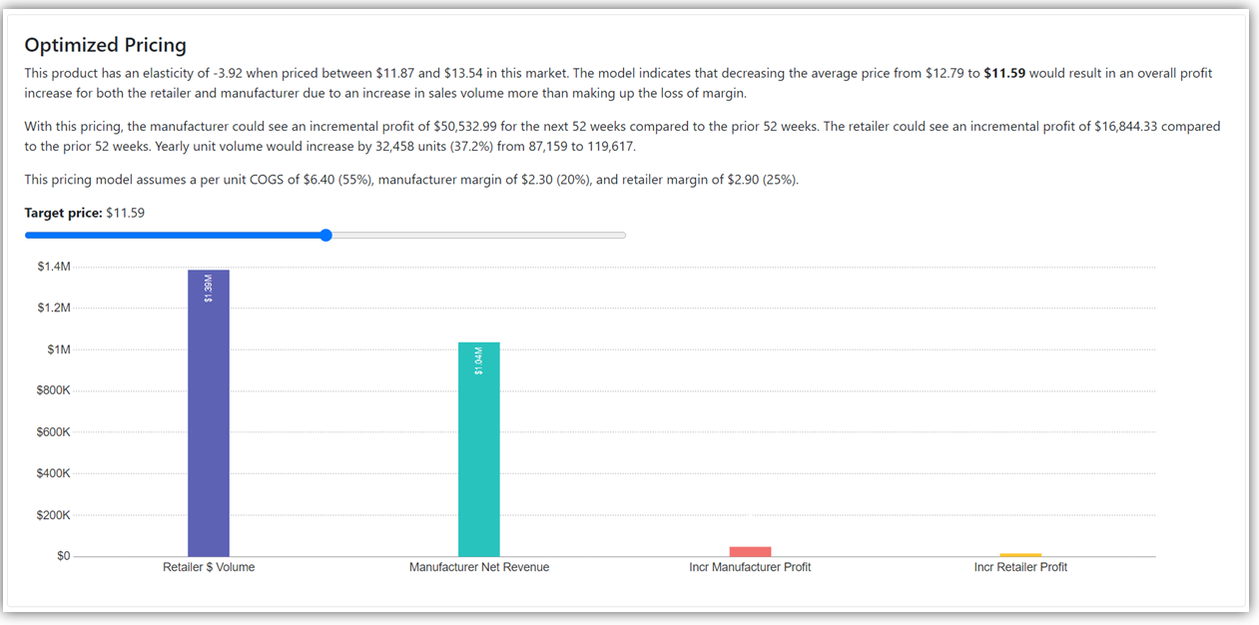Why Price Optimization?
CPG analysts and executives need to understand how pricing impacts revenues and profitability. The goal is to understand how shoppers’ willingness to purchase changes at different price levels (e.g., the demand curve).
Combining this knowledge with internal COGS values lets analysts calculate how pricing changes impact profitability.
A common use case for Price Optimization would be for a CPG manufacturer to determine if SKUs with a particular flavor or size are more or less price sensitive than other SKUs in the category.
Another use case might include a manufacturer wanting to increase prices 5% overall with minimal impact on sales volume. With Koala Price Optimization, they can determine which SKUs can stand a higher increase and which ones can support a small increase or none at all.
Combining this knowledge with internal COGS values lets analysts calculate how pricing changes impact profitability.
A common use case for Price Optimization would be for a CPG manufacturer to determine if SKUs with a particular flavor or size are more or less price sensitive than other SKUs in the category.
Another use case might include a manufacturer wanting to increase prices 5% overall with minimal impact on sales volume. With Koala Price Optimization, they can determine which SKUs can stand a higher increase and which ones can support a small increase or none at all.
Key Advantages to Elasticity Modeling in Koala
|
Artificial Intelligence
- Integrated artificial intelligence provides detailed, actionable conclusions for each evaluated SKU/market combination
- Detects and removes impact of distribution levels and non-price promotions from model



